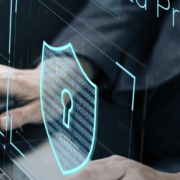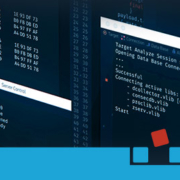5 strategic tips for preventing data loss
Data is an invaluable e-commerce resource, and protecting it is a high priority for all IT-reliant organizations. Cybercrimes such as data breaches and ransomware attacks are the usual culprits for most data loss incidents. In 2019, 164.48 million records were exposed in 1,606 reported data breach cases in the U.S. alone.
Cyberattacks are not the only causes of data loss. Organizations can also lose data through natural disasters, equipment or software failure, and accidental deletion. Additionally, data loss could mean lots of different things, including data unavailability, corruption, and leakage.
Although most companies regard data protection as a facet or objective of their cybersecurity framework, data deserves a dedicated safety strategy due to its numerous risk factors. Here are some useful tips for creating an air-tight data loss prevention (DLP) plan.
Define your data protection objectives
Apart from all the obvious reasons, such as theft and leakage, why else would you want to protect data as an organization? In other words, establish your corporate data protection goals. It’s common for businesses to ignore this preliminary step and go straight to implementing various data protection measures. But having clear objectives from the start is essential when deciding the DLP strategies to adopt in the first place.
Build the plan around your data loss protection objective, whether it’s attaining compliance or maintaining data integrity, confidentiality, or availability.
Identify and understand what is at risk
Companies collect a lot of information, and not all of it needs protection. Categorize data based on its safety value. Identify the sources and locations of all sets of sensitive data within your organization and prioritize securing those. Such information typically includes employee and customer personal details, proprietary information, and trade secrets.
Monitor your data movements
Follow the path your data takes from its source, and storage, to where it’s processed or used. Then identify the people, equipment, and software applications that facilitate those movements. Analyze the data transfer and communications paths to determine the risks involved at every node, stage, or access point.
It’s impossible to develop a holistic data loss protection strategy without a clear view of how the data enters, moves, and leaves the organization.
Create a data loss prevention policy
Drawing from the information you’ve gathered, formulate a data loss prevention policy that suits your organization. The policy should outline the organizational, software, or hardware changes necessary to meet the pre-defined data protection goals. In some cases, the proposed changes may also apply to third-party organizations or contractors affiliated with your supply chain.
Create a data policy that aligns with the kind of data your company handles, legal and industrial compliance requirements, and business model. Finally, decide on the best rollout and enforcement approach, depending on the policy’s scope and existing infrastructure.
Educate your employees
HR is an integral part of any data security strategy. Remember to keep your employees informed of what’s happening before, during, and after the data protection policy rolls out. Bring employees on board with the new changes and explain their roles in the data safety efforts. Help them understand the importance of a DLP policy and observing the laid-out guidelines. Also, create an element of accountability throughout the organization by making team leaders and individuals answerable for any risky actions that may jeopardize data safety.
Data loss can be a devastating blow to any business. According to IBM’s Cost of Data Breach Report 2020, the average cost of a data breach is nearly $4 million. And the devastation doesn’t stop there. Losing data tarnishes a company’s image and may also attract legal action such as license suspension and damages lawsuits. This is why a strategic data loss protection formula that works is vital in an increasingly data-driven business world.
At KME Systems, we understand the importance of keeping your internal and external data secure. We take a proactive approach in doing so and address issues before they become a large problem. Contact us to learn more about our cybersecurity solutions and how we can help protect your business.












